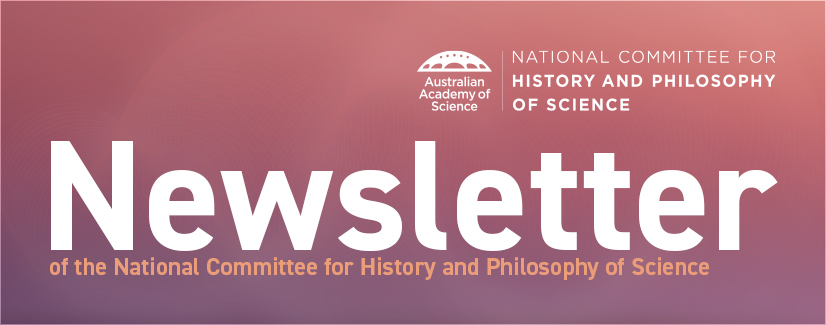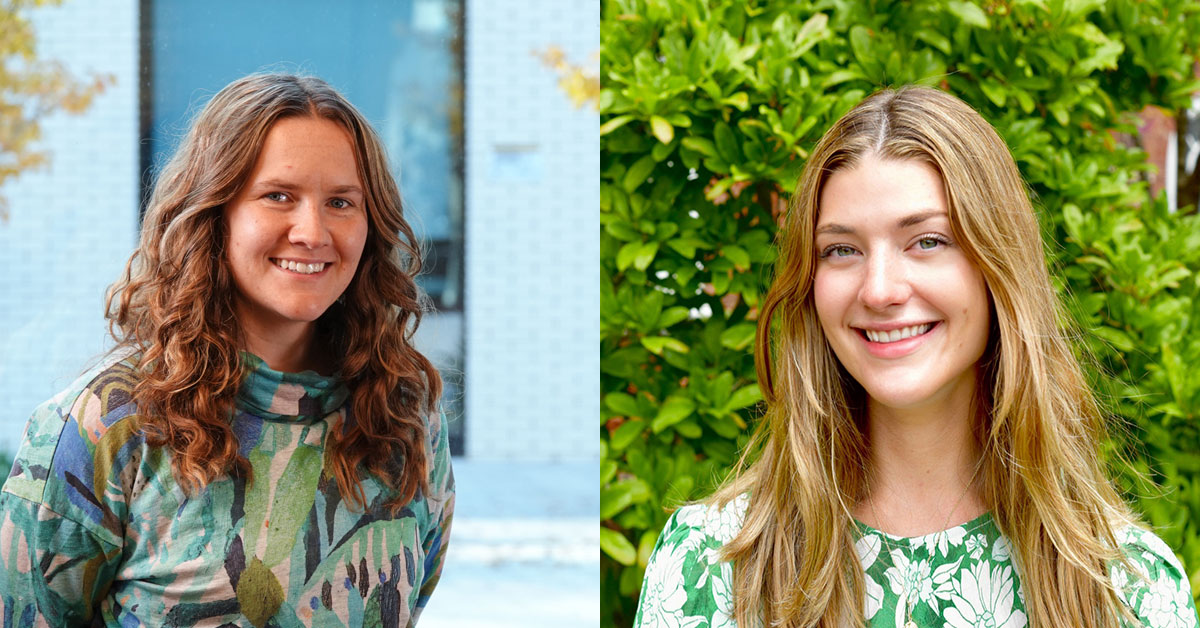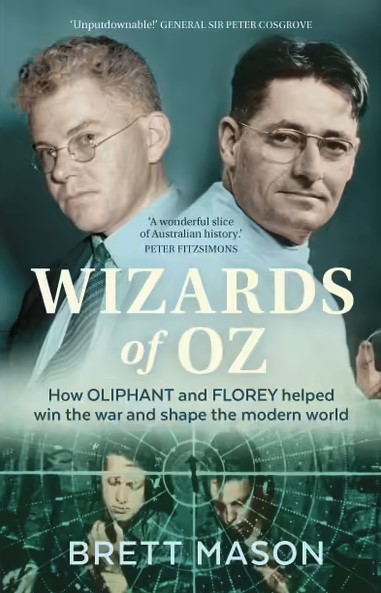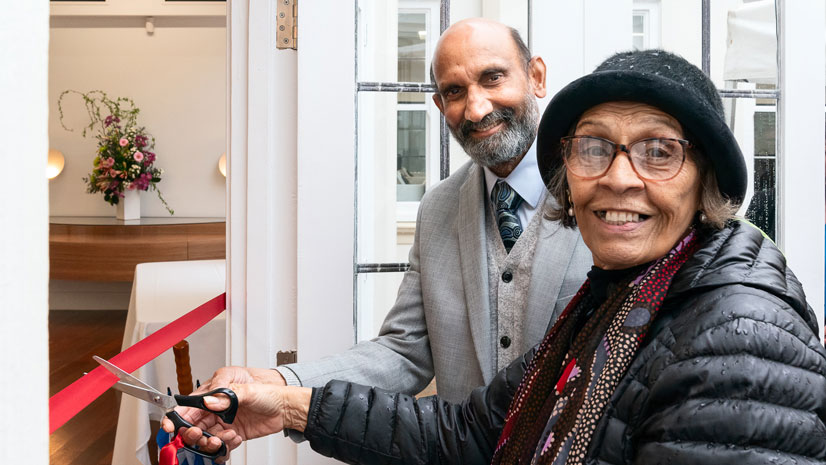
The Newsletter of the National Committee for History and Philosophy of Science (NCHPS) highlights news, opportunities and events relevant to the diverse fields of interest that occupy the discipline of history and philosophy of science.

Daniela K. Helbig, School of History and Philosophy of Science, The University of Sydney
Welcome to the latest instalment of HPS news from across Australia.
There are plenty of events and opportunities to report on: at conferences, exhibitions at the State Library of Victoria, and Radio National’s History Listen, HPS scholars have been discussing topics that range from crafting the universe to technological enhancements of the human brain, from botanists’ note-taking practices to the commercialisation of Indigenous intellectual property.
The AusSTS Graduate Workshop in July brought together emerging and established STS scholars for a series of events across multiple sites. Have a look at Timothy Neale’s Community Showcase for more details.
My reflections on ‘Big Questions’ for our field build on Cordelia Fine’s column in the June 2022 newsletter, asking what the post-Covid future might entail for Australian universities. It’s a big question indeed, and my contribution in this issue singles out digital teaching technologies as partly a legacy of the pandemic, and as a legacy that raises urgent question for historians and philosophers of science and technology.

Daniela K. Helbig
Walking across campus, a colleague of mine recently overheard an encounter at the University of Sydney. On a crowded footbridge, a student squeezed past a group of others and caught one individual’s voice. Almost in disbelief, he turned back to ask, “Wait---Ben? Are you… Ben?!” An equally perplexed Ben responded: “Dan?? You must be Dan! I can tell from your voice!” On Zoom, they had never turned their cameras on, and this accidental encounter was the very first meeting in person between two classmates. My colleague eventually went her own way, leaving Ben and Dan engaged in excited conversation.
Moments like this are among the more charming quirks brought about by the teaching technologies that were implemented rapidly during the pandemic, and with plenty of goodwill and effort on behalf of university staff and students. These technologies provided a way to make do. But now that most public health measures have been dropped across Australia and the country’s borders have reopened, they pose ‘big questions’ indeed for those attuned to thinking about the social implications of, and conditions for, technological change. Social distancing dots on park benches have largely been removed, but the teaching infrastructure put in place during the pandemic lives on under the myth of ‘hybridity’: the alleged equivalence of in-person and digitally mediated teaching.

Convenient as this myth is for the purpose of continuing to rely largely on overseas student fees to fund the Australian university sector, it glosses over other serious problems too. Increased workload is just one of them. Casual teaching staff have borne the brunt of it, and it is no coincidence that the long-standing demand for ‘safeguarding the teaching–research nexus’ is high on the priority list for the NTEU’s current enterprise bargaining process at Sydney University.
But beyond workload distribution, we need to reflect on the values imparted through the teaching process – values that are contested, and that will differ between individuals and institutions. Teaching technologies, like any other, configure social relations between all participants in the process, like Sydney University students Ben and Dan. Can the ongoing reliance on recordings and digital communication tools create a shared sense of critical engagement, personal accountability and mutual respect? Or does it help stabilise an understanding of students as customers that, unsurprisingly, feeds into the flourishing market for ‘contract cheating’ that has made newspaper headlines across the political spectrum in Australia in recent years?
Posing these questions is not to romanticise a pre-digital past, but to point to the need to be more imaginative, and clearer about the purpose of the tools we use in our trade. To examine the impact of digital technologies developed in and adopted from commercial contexts on the forms and contents of our teaching and research is very much a question for historians and philosophers of science and technology. These are problems that inform our weekly teaching meetings with my brilliant tutors. To them, the question is alive whether the university environment we’re shaping now is one in which they would like to have research and teaching careers.

The Committee was saddened recently to learn of the passing of Australian archaeologist and National Museum Senior Research Fellow Dr Mike Smith, who was a well-known leader of his field and mentor of young researchers. The Australian Academy of Science, through the Committee, partners with the National Museum of Australia to award the Mike Smith Student Prize every second year to reward and recognise the work of students in the history of Australian science or Australian environmental history. In September, the Academy announced Jessica Urwin and Margaret Williams as the 2021–22 joint winners of the Mike Smith Student Prize for their insightful essays.
In other news:



Date: Ongoing throughout 2022, recorded
Venue: State Library of Victoria
Exhibition at the State Library of Victoria. Handmade Universe celebrates the rewards of making and the limitless scope it offers for invention and enquiry.
Date: 22 November – 24 November
Venue: Shine Dome and Parliament House
Science at the Shine Dome is the Academy’s annual flagship event. Across three days, Australia’s most influential scientists gather at the Shine Dome in Canberra to celebrate and honour outstanding achievements in science. It is a time for researchers from all disciplines and career levels to come together to present, share, network and collaborate.
Find out about opportunities for scientists in the latest Academy Newsletter.

Ian Potter House, the headquarters of the Australian Academy of Science, was officially reopened 989 days after it was extensively damaged during Canberra’s 2020 hailstorm.

“We hope to have created a beautiful, inspiring, accessible and sustainable home for the Australian Academy of Science, its Fellows and staff,” Professor Jagadish said in his opening address.
Academy of Science Chief Executive, Anna-Maria Arabia, welcomed back Fellows and staff and thanked them for their patience and resilience over this disruptive period.
“I am incredibly proud that we have been able to refurbish Ian Potter House, and to restore a building that holds a special place in Australia’s history and that will contribute to our future,” Ms Arabia said.

Timothy Neale
The fourth annual AusSTS graduate workshop occurred on the 28 and 29 of July. I was delighted to participate and lend a hand in what has become a key yearly Science and Technology Studies (STS) gathering, and this year’s theme of ‘Generation’ spoke not only to STS understandings of knowledge and ideas as always unfinished and multiple, but also the workshop’s aim of connecting emerging and established STS scholars.
As last year, the workshop involved several simultaneous nodes in Australia and Aotearoa New Zealand, with shared keynote lectures and in-person panels and fieldtrips in Melbourne, Sydney, Darwin and Wellington. This year, it was preceded by a workshop on publishing in the field, led by Kari Lancaster, Courtney Addison, Matthew Kearnes and myself (Science, Technology, & Human Values), Sujatha Raman (Engaging Science, Technology and Society) and Rachel Ankeny (Studies in History and Philosophy of Science).
In Melbourne, we then hosted Professor Anne Pollock from Kings College London who delivered a keynote lecture about feminist, anticolonial, and decolonial trends in the field. Professor Pollock began with insights from Ruha Benjamin’s forthcoming Viral Justice that there is much to be gained from moving beyond critique and thinking of “what we want to grow”. She also spoke of her excellent new book Sickening and why she chose to write a critical book about race that, rather than starting in the colonial past, instead works to engage contemporary readers through contemporary examples. After Professor Pollock’s keynote, we were treated to a range of research presentations by PhD students and early career scholars.
Day two began with an ‘intergenerational’ panel beamed from Wellington – featuring Hana Burgess (University of Auckland), Mythily Meher (University of Auckland), and Billy van Uitregt (Victoria University of Wellington) – and was rounded off with field trips to the State Library of Victoria and Melbourne Museum. It was another great year for the workshop and, having participated in all four, I am really excited for what’s next for this trans-Tasman community, as it continues to flourish and grow.
Stay tuned to the network, because there are already whispers about next year’s workshop!
© 2025 Australian Academy of Science